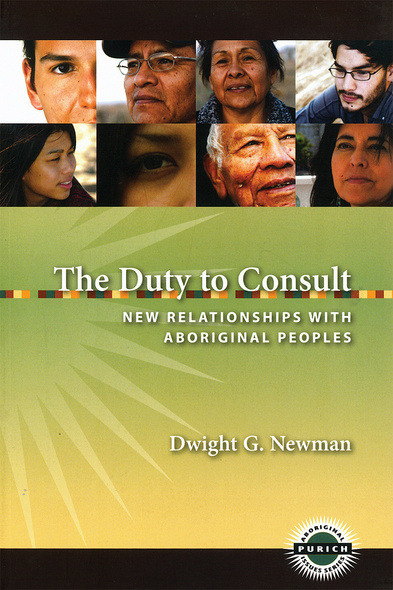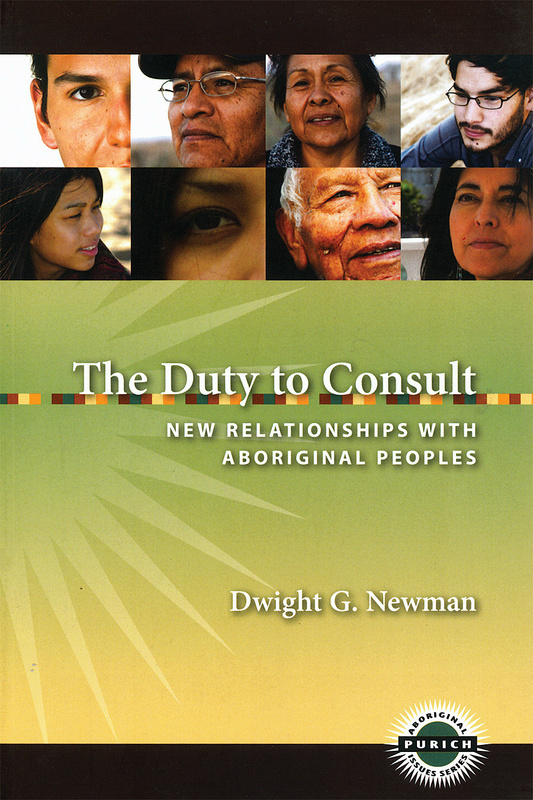
The Duty to Consult
New Relationships with Aboriginal Peoples
“[W]hen precisely does a duty to consult arise? The foundation of the duty in the Crown’s honour and the goal of reconciliation suggest that the duty arises when the Crown has knowledge, real or constructive, of the potential existence of the Aboriginal right or title and contemplates conduct that might adversely affect it.”
–Chief Justice Beverley McLachlin, Supreme Court of Canada, Haida Nation v. British Columbia, 2004.
Canada’s Supreme Court has established a new legal framework requiring governments to consult with Aboriginal peoples when contemplating actions that may affect their rights. The nature of the duty is to be defined by negotiation, best practices, and future court decisions. According to Professor Newman, good consultations are about developing relationships and finding ways of living together in the encounter that history has thrust upon us.
Newman examines Supreme Court and lower court decisions, legislation at various levels, policies developed by governments and Aboriginal communities, and consultative round tables that have been held to deal with important questions regarding this duty. He succinctly examines issues such as: when is consultation required; who is to be consulted; what is the nature of a “good” consultation; can consultation be carried out by quasi-judicial agencies and third parties; to what extent does the duty apply in treaty areas; and what duty is owed to Métis and non-status Indians? Professor Newman also examines the evolving duty to consult in international law, similar developments in Australia, and the philosophical underpinnings of the duty.
Preface
1. Doctrine and Theory
The Supreme Court Trilogy
Understanding the Duty to Consult
Theoretical Approaches to the Duty to Consult
2. Legal Parameters of the Duty to Consult
Introduction
Triggering the Duty to Consult
a. Knowledge of the Aboriginal Title, Right, or Treaty Right
b. Adverse Effect Element of the Triggering Test
c. Contemplated Government Conduct
d. Summary on Triggering Test
Consultation Partners
Judicial and Quasi-Judicial Intervention on the Duty to Consult
Conclusion
3. The Doctrinal Scope and Content of the Duty to Consult
Introduction
Content of the Duty to Consult
a. Introducing the Spectrum of Requirements on the Duty to Consult
b. Specific Factors within the Consultation Requirements
c. The Consultation Spectrum
Table: Matrix on Consultation Intensity
d. An Example: The Keystone Pipeline Case
The Duty to Accommodate
The Duty to Consult and Economic Accommodation
Legally Acceptable Consultation and Good Consultation
4. The Law in Action of the Duty to Consult
Introduction: The Concept of the Law in Action
Development of Governmental Consultation Policies
Aboriginal Communities' Consultation Policies
Development of Corporate Consultation Policies
Policies, Practices, and the Formation of "Law"
Conclusion
5. International and Comparative Perspectives for the Future
Introduction
International Law and the Duty to Consult
Comparative Law: Australia's Experience with the "Right to Negotiate"
Conclusion
6. Understanding the Duty to Consult
Notes
Index





